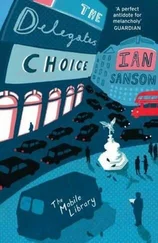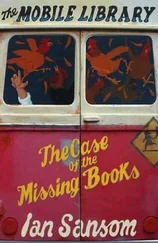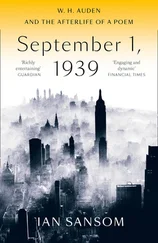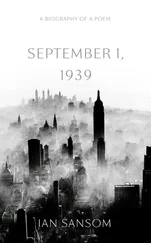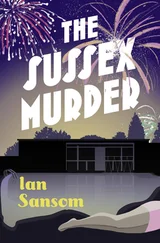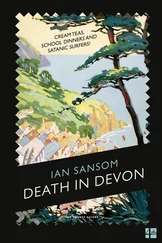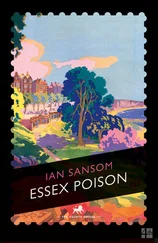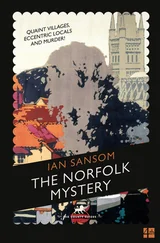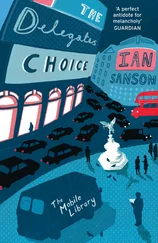‘Appleby!’ cried Morley. ‘The county town of Westmorland! We’ll meet you at Appleby, Sefton!’
I ran into the station, shouting to the porters for the seven fifteen: they pointed me to platform 3. I ran past the ticket inspector and made it to the last carriage of the train, where a young mother was struggling to get on with a young girl and a baby. The guard was calling the departure as I managed to lift up the girl and slam the door behind us – and the train shuddered forward.
I stood for a long time at the window looking out for MacDonald, but there was no sign of him. I must have lost him in the crowd.
Satisfied, I made my way to a compartment, squeezing past fellow passengers and their luggage. There was the woman with the baby and the child.
‘Mummy, Mummy,’ said the little girl. ‘It’s the nice man, Mummy.’
The young woman smiled at me warmly.
‘Do you mind if I join you?’ I said.
‘Of course,’ she said. ‘Thank you so much for helping.’
‘The baby will cry,’ said the little girl. ‘But all babies cry. What’s that?’ she asked, pointing at the Leica.
‘It’s a camera,’ I said.
‘What’s a camera?’
‘It’s something that you can take pictures with.’
‘Like a drawing?’
‘Yes, I suppose.’
‘Is there a pencil inside it?’
‘No,’ I said. ‘There’s not a pencil.’
‘Is there a pen?’
‘No, there’s not a pen either.’
‘Is there paint?’
‘Look,’ I said. ‘Do you want to see?’
The girl looked at her mother, her mother nodded, and the little girl came and sat close to me; as we left London I showed her how to open the camera, how to check the shutter and the focus and how to frame a photograph. I took her photograph and she took mine.
‘Are you coming with us?’ asked the girl. ‘Mummy, can the man come with us?’
‘The man is on his own journey,’ said the mother. ‘He’ll be going somewhere himself.’
‘We’re going to Carlisle,’ said the little girl. ‘Where are you going?’
I looked at her. I felt suddenly exhausted. ‘I don’t know, actually,’ I said. ‘I don’t know where I’m going.’
‘You’re funny,’ said the girl. ‘You’re a funny man!’
‘He’s just tired,’ said the mother. ‘Let him rest now.’
CHAPTER 3
72 MILES, 1,728 YARDS
IT WOULD NOT BE an exaggeration to say that Morley was obsessed with the Settle–Carlisle line. He was obsessed with a lot of things, of course, but the Settle–Carlisle remained for him one of the great foundation stones – ‘one of the canonical lines’, he famously called it – of England. I have no doubt that if he could have seen the destruction later wrought upon the railways he would not have despaired: he simply would not have let it happen. There would have been campaigns, organisations, books, leaflets, marches on London, a popular uprising: Mr Beeching would have taken one hell of a beating.
After our trip to Westmorland, Morley revised and updated his famous book, 72 Miles, 1,728 Yards (1935), in which he describes the route of the Settle–Carlisle line, mile by mile, yard by yard, tunnel by tunnel, viaduct by viaduct, every gradient, every ascent, every twist and every turn. I doubted that the new edition would sell a single copy. It became a bestseller. His most popular lecture series – by far – during our time together was on the Settle–Carlisle line, more popular than the ‘World of Wonders’ series and the ‘Home Husbandry’ series combined, more popular even than the infamous ‘Communism, Fascism: What Exactly is the Difference?’ lecture, which always drew a crowd (and which, indeed, on a number of occasions, caused a riot). In the Settle–Carlisle lectures he lovingly described the planning and construction of the line, its maintenance, and its day-to-day operations, beginning and ending with a sing-song recitation of the names of all the stations: Settle, Horton-in-Ribblesdale, Ribblehead, Dent, Garsdale, Kirkby Stephen, Crosby Garrett, Ormside, Appleby, Long Marton, Newbiggin, Culgaith, Langwathby, Little Salkeld, Lazonby and Kirkoswald, Armathwaite, Cotehill, Cumwhinton, Scotby, Carlisle. Anywhere north of Watford the recitation of the station names alone would often earn him a standing ovation. (Admittedly, the lectures tended to be less popular in the Home Counties, though they played surprisingly well in London.)
Indeed, in recognition of his work promoting the railway industry in general and the Settle–Carlisle line in particular the big four railway companies – the old LNER, and the GWR, the LMS and SR – awarded Morley in 1939 a fat little golden locket, inscribed with his name, on a chain. He needed only present the locket to a ticket inspector on board a train to be granted free first-class travel the length and breadth of the country. Morley cared almost nothing for awards and baubles: one bathroom at St George’s was rather eccentrically papered with moulding black and white certificates and citations that might more usually have been proudly framed and displayed, and a crusty old armoire in a guest bedroom served as storage space for his various medals, statuettes and gifts ‘in recognition of’, many of them featuring depictions of pens and quills carved in marble, onyx, or, in one case – after our trip to Durham – made out of coal. Morley referred habitually to such awards and honours as ‘chaff’ and, occasionally, as his ‘pointless paper empire’. *But the Big Four locket travelled with him everywhere until the day he died.
According to Morley in 72 Miles the Ribblehead viaduct was one of the modern wonders of the world, and the route of the Settle–Carlisle line ‘a journey into the heart of England and Englishness’. (He also made this claim, it should perhaps be conceded, about the west Norfolk coastal route, the GWR journey down to Devon, the Esk Valley line, and the all-electric Southern Belle route from Victoria to Brighton.) Describing the Settle–Carlisle line he rose to sweeping rhetorical heights:
There is perhaps not even in Switzerland, nor in India, nor indeed in our own green and pleasant land, a more magnificent journey than that through the great valley of the Ribble, and on round the broad shoulder of the mighty Whernside at Blea Moor, on through the valleys of the Dee and Garsdale, up and over the watershed to the summit at Aisgill, and then through the justly named Eden Valley towards Carlisle. If the good Lord Himself had been a railway engineer during the glory years of the mid- to late nineteenth century, he could not have plotted a finer route.
‘The Settle–Carlisle line is not a journey by rail,’ he famously concludes 72 Miles . ‘It is the journey of a soul.’ There was perhaps a slight tendency in all his work for Morley to wax unnecessarily lyrical but in his great paean to the Settle–Carlisle line his prose found its proper subject. The book combined perfectly his poetic instincts with his obsessive practical concerns. He was an expert on every aspect of the line, from the ‘long, tall’ Douglas fir and Baltic pine sleepers, to the ‘doughty’ granite chipping ballast, the ‘proud’ stations, the tunnels, the viaducts and the signals. And of course, alas, he became an expert on its tragedies.
I can imagine the journey that Miriam and Morley enjoyed on the way to Westmorland, the same journey as all our journeys: Morley seated in the back of the Lagonda, among his books and writing requisites, Hermes typewriter wedged into position on the portable desk, sharp pencils at his elbow and paper conveniently to hand, pouring endlessly forth like some magic fountain. His voluminous notes on the journey – including a ton or more of notebooks and index cards and papers for the putative book on the Great North Road, never published – are housed now, along with all his other manuscripts, in Norwich. There, in his favourite county, the ‘still centre’, the reader might recreate that journey from London to the Lakes, from the Whittington Stone at Highgate Hill, ‘memorial to Britain’s most benevolent citizen’, through the beauty of Welwyn village, home to Edward Young, author of Night Thoughts , and, according to Morley, echoing Dr Johnson, ‘perhaps England’s most defected genius’, and on and up past the famous Folly Gateway at North Mimms, stopping off for refreshments at the Roebuck at Broadwater, past the Caxton Gibbet, and on and on past Retford, Bawtry and Doncaster. Morley has often been described – and dismissed – as a mere antiquarian, a provincialist, a dull draftsman, a ‘topophiliac’, in the words of one particularly patronising critic in the Listener , devoted to places rather than to people, but he was also interested in the everyday lives of men and women, and in the chronological as well as the chorological: indeed, a part of his research for the Great North Road book includes dozens of typed pages on the history of the St Leger race, held annually since 1776, when it was won by a brown-bay filly sired by the mighty Sampson; the notes, like Morley, go on and on, and range wide and deep, a complete portrait of people in a landscape, a Brueghel in words. He was, in all his books, and certainly during my time with him compiling The County Guides , a celebrant of all that was living – though in reality our business was often with death.
Читать дальше

